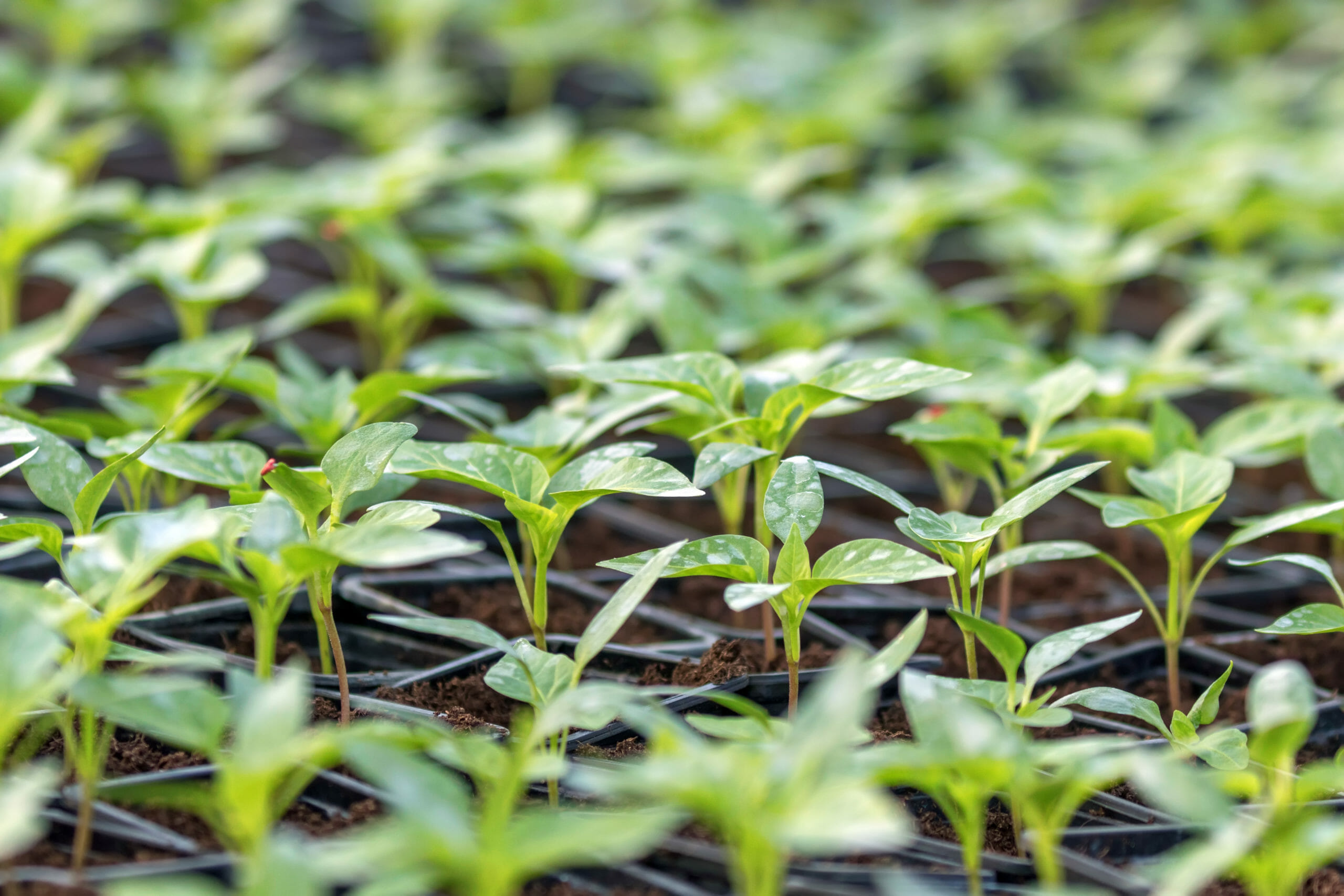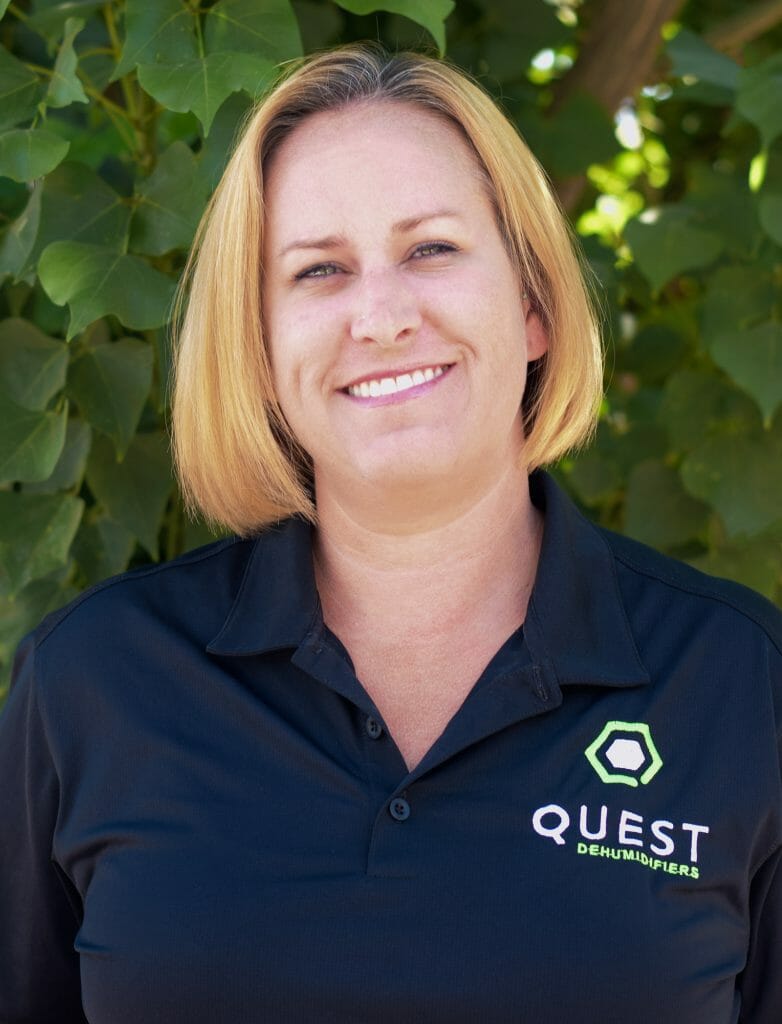Q&A: Avoiding Powdery Mildew Before it Strikes
With Melaney Watson

Powdery mildew is a common—yet avoidable—cause of crop loss on cannabis.
To learn more about powdery mildew and how it can be avoided, we sat down and talked to Melaney Watson, who draws on more than a dozen years’ worth of experience in the hydroponics and growing industries in her current position as a factory representative for Quest.

To start off, can you tell us what powdery mildew is?
Answer: It’s actually a fungal disease, which means it’s spread by spores. When it’s on your plants, it almost looks like someone has sprinkled flour on the plant. And once it shows up, it can really cause problems if you don’t deal with it. Eventually it can kill off your plants or reduce your yields.
Are there ways to get rid of powdery mildew once your grow has been infected?
A: There are a bunch of different treatments out there. Different fungicides that people can and do use. Most were originally developed to be used on vegetables, or fruiting and flowering plants. But there’s a lot of controversy about using chemicals on other plants.
Personally, I’m more of a purist. I’d rather avoid a powdery mildew outbreak in the first place than use chemicals to get rid of it, partly because the residue from chemicals may be safe to eat, but that doesn’t mean they’re safe to consume in other ways. There’s also the issue of what part of the country you’re growing in. In some places, medicinal crops are tested, in others everything is tested, and in some places end users may never know what’s on the product.
It will be interesting to see how things change in the coming years in terms of the use of chemicals to treat plant diseases.
How does a grower avoid powdery mildew?
A: To avoid powdery mildew, you need to make sure the environment is set up well, especially with the right humidity levels. There are other factors that can help but they’re much more challenging to control. I mean, if you never get spores in your grow room, you won’t get powdery mildew. But this is a more complex challenge, so work on controlling the environment instead.
Powdery mildew is only able to grow when your environment reaches a certain humidity point, so if you’ve got too-high temperatures, too-heavy watering and too-high humidity, you’ve got a breeding ground for it.
So, keeping your temps at a more moderate level—in the mid-70s range is a good level— keeping humidity below 60 percent at all times and allowing your plant to dry out before applying more water is the best way to avoid powdery mildew. Unfortunately, some of the growers that are just starting out miss a few of those steps, especially dehumidification.
Why do you think that is?
A: For the first timers, dehumidification just falls to the wayside. Small growers don’t include it in their initial projections and plans, it winds up being an afterthought. I think a lot of first timers just figure out their lighting plan and their nutrient plan, they decide on soil or rockwool, and they think they’re good to go.
Dehumidification is an afterthought because they don’t realize the types of problems they’re going to encounter with heat and high humidity.
Another thing they do is they undersize their space—a first-time grower may not have that key knowledge about how to decide what kind of dehumidifier they need. You’ll see someone who has a 70-pint dehumidifier but what they need is a 155-pint dehumidifier.
That seems like a bad place to be.
A: Well, in any size grow, small or large, it should be in the initial plans, not be an afterthought.
It’s too bad, because some growers only realize how important it is when they experience crop loss. They lose crops to powdery mildew, or to Botrytis or bud rot, and then it’s too late. They’re out time and money. But that’s when people get serious about it.
Can you elaborate on the importance of dehumidification?
A: Most experienced growers know humidity is one important element that impacts plant growth — it should be considered as part of overall plant health right up there with light and water. But the bigger picture is, without proper humidity controls and a serious approach to dehumidification, growers are opening themselves up to the risk of really devastating crop loss from plant molds and fungus.
Growers should know that pesticides aren’t necessarily the best answer to controlling molds and fungus, things like powdery mildew. Both consumer demand and pending state regulations are going to keep pushing the industry away from the use of pesticides. And if you’re not using pesticides, the best way to avoid crop loss is to control your humidity.
This article originally appeared in The Cannabist.
Published on Jul 24 2017
Last Updated on Feb 20 2024
Categories: Agriculture, Cannabis Mold, Commercial Dehumidifier, Humidity, Powdery Mildew
Tags: cannabis crop loss, clean cannabis, fungicides, The Cannabist
